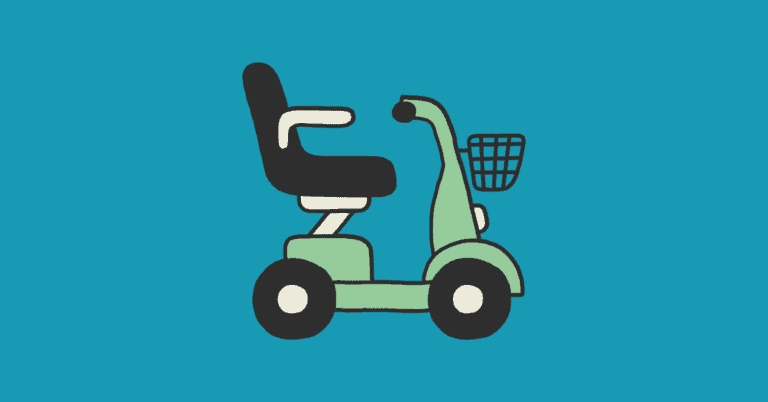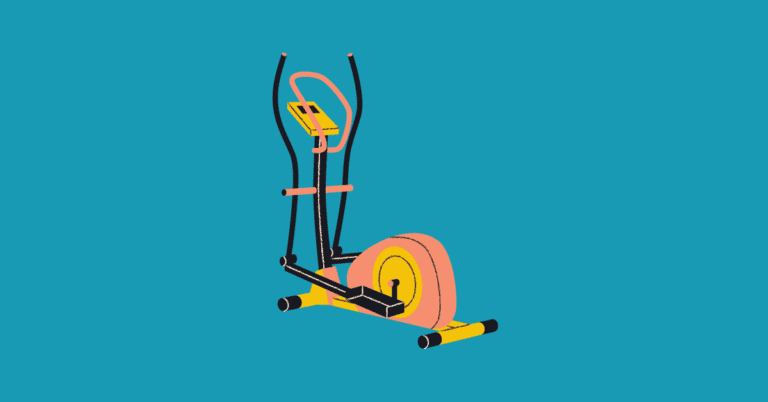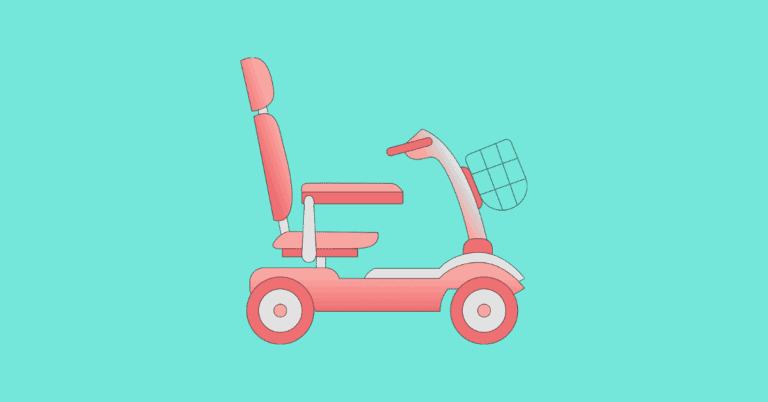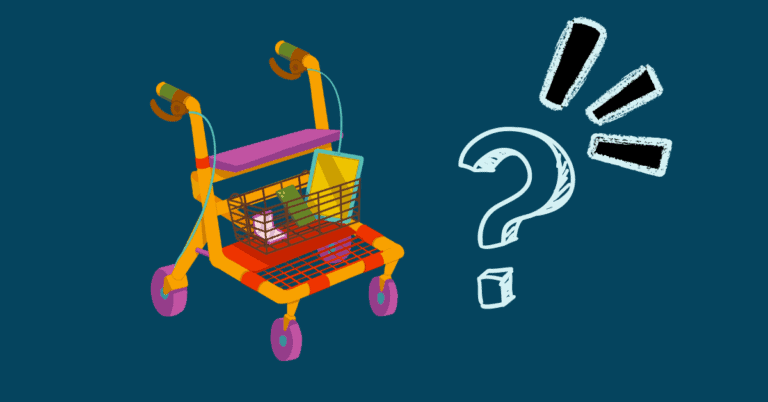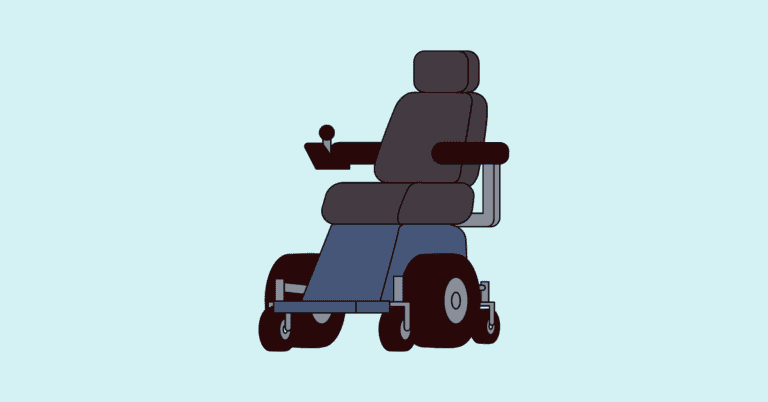Mobility And Walking Aids: 13 Types And Purpose
When it comes to maintaining independence, quality of life, and enhancing mobility, the right walking aid makes a huge difference. This article gives a brief overview on the different types of mobility and walking aids, shedding light on their unique purposes.
What are the purposes of mobility and walking aids?
Let’s grasp the big picture. From electric wheelchairs to canes, these aids are tools designed to offer the support, stability, and freedom you need to navigate daily life.
Having worked closely with patients that utilize an array of these aids, I’ve witnessed firsthand the transformative impact when the right assistive device is paired with an individual’s needs. It’s a game-changer, supporting independence and enabling a safe return to activities they love.
It’s important to recognize that finding the perfect fit can still be a personal journey. If you’re navigating concerns or seeking tailored advice about the right mobility aid for you, don’t hesitate to reach out for professional guidance. This guide serves as a broad overview, but the intricacies of your unique situation might call for personalized insights.
1. Manual wheelchair

As implied a manual wheelchair doesn’t use electric power, the user has to use their own arms to make it move. So, when it comes to choosing between an electric wheelchair and a manual one, one of the most significant differences lies in the demand for upper body strength/endurance.
I’ve seen individuals opt for a manual wheelchair not just because they are able to physically do so but also for the flexibility it offers; For example, manual wheelchairs are lower maintenance, more lightweight (and hence portable), and in some case, may even allow better accessibility when it comes to navigating uneven surfaces and terrains.
Some choose to switch back and forth between a manual wheelchair and a power wheelchair, tailoring their choice based on their daily needs and activities. Or in some cases, a person may find a manual wheelchair better aligns with their goals for physical activity and independence.
2. Mobility scooter
A mobility scooter may seem similar to a power wheelchair but there are some key differences. Mobility scooters typically have a tiller or handlebar steering system, similar to that of a bicycle or motorbike. They are designed for users to sit on, much like a chair but legs are not supported to the same extent as a power wheelchair.
In general, mobility scooters are intended for individuals who can walk short distances but require assistance for extended outings or have difficulty with prolonged standing.
The decision to use a motorized scooter is personal, influenced by factors like convenience, ease of operation, and specific mobility challenges.
3. Electric wheelchair

As a high-level assistive device, electric wheelchairs offer a lot of support, particularly for individuals facing lower limb paralysis or conditions impacting muscular health and voluntary activities. In such cases, it’s evident that electric wheelchairs are often the go-to choice for optimal independence.
Now, within the category of electric wheelchairs, there’s a plethora of options to consider. The best electric wheelchair for you depends on your needs and priorities. Differentiating themselves through features like power tilting, recline capabilities, and different wheelchair frame designs, these electric wheelchairs cater to a spectrum of different purposes. For example, electric wheelchairs with power tilting may benefit a person that needs assistance with pressure relief.
Ultimately, electric wheelchairs are better suited for individuals with more significant mobility challenges, including those who may have difficulty walking or standing for any duration.
4. Standard Rollator

A rollator, often called a rollator walker, is not your typical walker; Unlike traditional walkers, a rollator has four wheels and does not need to be lifted off the ground with each step. For those that are at increased falls risk or have balance/stability issues, a rollator is a good option to prevent fall injuries.
A rollator may also be a good choice for a person with limited walking endurance because traditional rollators generally come with a seat so that you can take a seated rest break whenever necessary. When exploring options about the best rollator walker with a seat for you, consider features like height adjustable, hand brakes with locking feature for safety, and portability.
5. 3-Wheel rollator
There are different types of rollator models, with 3-wheel rollator being one of them. The difference between a regular rollator and a three-wheel rollator is the front design. The 3-wheel rollator is cone shaped at the front in order to improve maneuverability, such as navigating small tight spaces or crowded areas.
Since it is only 3 wheels, this type of rollator does offer less stability in comparison to a regular 4-wheel rollator, and often doesn’t come with a seat due to its design.
6. Upright rollator
Another type of rollator is an upright rollator. Unlike traditional rollators, upright rollators are intended to encourage a more upright posture during use as you rest your forearms on the arm rest – which can be great for individuals that struggle with hand/wrist weakness or pain (like arthritis); even so, this doesn’t necessarily mean that a regular rollator encourages a forward posture.
However, in a standard rollator, the base of support is further up front from you, potentially leading to a more forward-leaning posture over time (if you are not conscious of your posture). With an upright rollator, you are walking more closely within the base of support. Due to its design and greater width, upright walkers tend to have a larger turn radius and may be harder to navigate in tight spaces and through narrow corridors.
In choosing between an upright rollator and a regular rollator, you should consider your specific needs, and preferences. For instance, if you already deal with back discomfort from a hunched posture, then you may want to consider an upright walker.
7. Rolling walker

Rolling walkers, equipped with two front wheels, so you don’t need to lift the walker off the ground with each step. These walkers are often one of the most common assistive devices you will get post-operatively in the hospital.
They can be used both to reduce weight off of one limb or completely take all the weight off of that one leg, so that you are relying on your other leg and arms to carry your bodyweight. For those that require occasional assistance during the day, opting for a rolling walker can be a practical choice.
8. Standard walker
Standard walkers are becoming less common, but you still may see them being used temporarily in hospitals. These walkers do not have wheels, so they generally have to be lifted off the ground every two steps.
They are also good temporary options for individuals recovering from lower limb surgery or injury – anytime, weight needs to be unloaded from the affected leg. For people with severe balance deficiencies, there are more stable mobility aids such as rolling walkers and rollators.
9. Walking Cane

Walking canes can be helpful for anyone that needs a mild to moderate amount of support during walking or negotiating uneven surfaces. It is a commonly used tool for balance, pain reduction (arthritis), or support for a weaker leg.
There are many different types of canes available such as a single point cane, quad cane (provides more stability due to four points of contact), seat cane, etc…When choosing a cane, consider your priorities, including the level of support needed, the cane’s intended use (indoor or outdoor), and any specific features like adjustable height or ergonomic handles that align with your comfort and mobility requirements.
10. Axillary crutches

Axillary crutches are generally used as temporary mobility aids during recovery periods such as post-operatively, injury rehabilitation, or whenever non-weight bearing assistance is crucial.
Their usage is often recommended by healthcare professionals based on the specific needs and conditions of the individual. Proper fitting, training, and guidance on using axillary crutches usually provided for optimal support and to prevent any complications during their use.
11. Forearm crutches

Forearm crutches may be a more suitable option for those that experience axillary discomfort with axillary crutches. Forearm crutches can serve as a temporary aid during injury recovery, or for longer-term use by those with mobility needs.
12. Knee scooter
Knee scooters allow the user to rest their injured leg on a padded platform with wheels, enabling movement without putting weight on the affected limb. They are a good mobility aid for those recovering from injury such as lower limb fractures or foot surgeries.
13. Walking sticks
Most use walking sticks for additional balance and postural support during their daily walks, especially when navigating uneven surfaces.
These walking aids may be a good option for you if you are looking for a lightweight and easily maneuverable option for mild to moderate support during walking.
Take-away
These are the different types of mobility and walking aids. The best option for you depends on your needs. Remember this brief overview serves as a starting point. For additional support and guidance, consider consulting a professional, such as a physical therapist.

